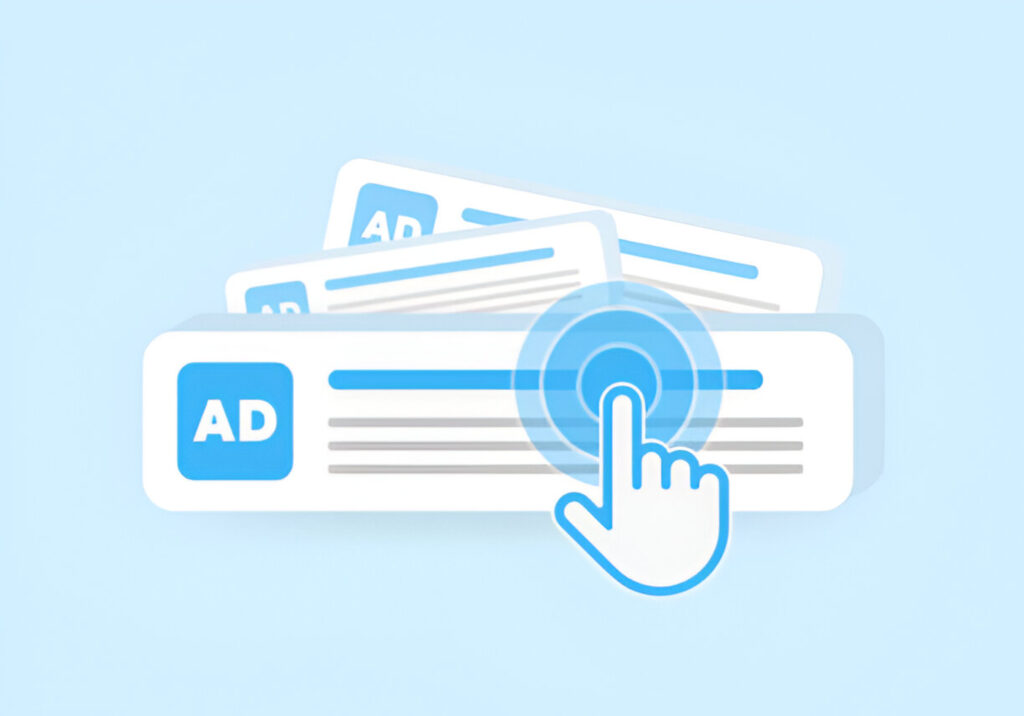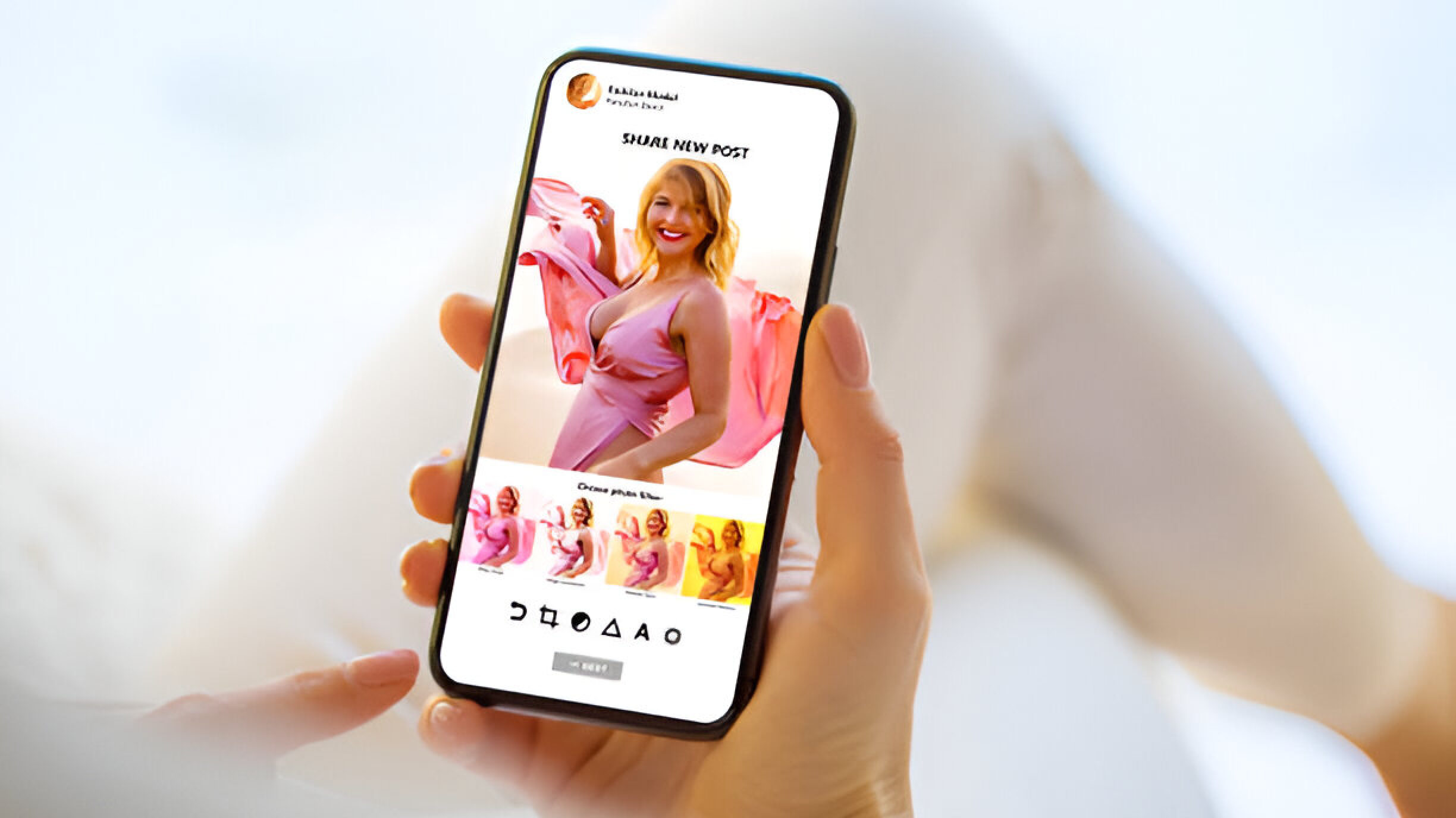Today, marketers face a growing challenge: ad blindness. This phenomenon occurs when users unconsciously ignore advertising content, developing a selective attention that filters out anything that resembles promotional material. Studies have shown that since 1995, click-through rates (CTR) have dropped from over 2% to an average of 0.05%, highlighting the growing challenge of engaging audiences through traditional banner ads.
As consumers become increasingly sophisticated in their online behavior, understanding and overcoming ad blindness has become crucial for marketing success.
Understanding Ad Blindness
Ad blindness isn’t just about users actively choosing to ignore advertisements – it’s a psychological adaptation to the overwhelming amount of promotional content we encounter daily. Our brains have learned to automatically filter out elements that match common advertising patterns, making traditional display ads increasingly ineffective.
Why Traditional Approaches Fall Short
The conventional wisdom of placing ads in prime locations – like website headers or sidebars – may actually contribute to ad blindness. Users have become so accustomed to these placement patterns that they automatically skip over these areas during their browsing sessions. Banner ads, in particular, suffer from this effect, with some studies showing recognition rates as low as 0.1%.
Effective General Strategies to Combat Ad Blindness

1. Native Advertising Integration
The most successful approach to overcoming ad blindness is creating advertisements that don’t look like traditional ads. Native advertising seamlessly integrates promotional content into the natural flow of user experience. This means developing ads that:
- Match the form and function of the platform where they appear
- Provide genuine value to the user through informative or entertaining content
- Blend with surrounding content while maintaining transparency about their promotional nature
2. Pattern Disruption
Breaking expected advertising patterns can help capture user attention. This involves:
- Experimenting with unconventional ad placements
- Using interactive elements that respond to user behavior
- Implementing dynamic content that changes based on user interaction
3. Personalization and Contextual Relevance
Delivering personalized ad content that aligns with users’ interests can significantly enhance engagement. Advertisements that demonstrate clear relevance to the user’s current context are more likely to break through the ad blindness barrier. This requires:
- Sophisticated audience targeting
- Real-time content adaptation
- Understanding and responding to user intent
4. Value-First Approach
Modern consumers are more likely to engage with advertising that offers clear value. This can be achieved through:
- Educational content that solves specific problems
- Entertainment that creates emotional connections
- Exclusive offers or information not available elsewhere
5. Innovative Ad Formats

Employing non-traditional ad formats can capture user attention more effectively. Social display ads, for instance, transform high-performing social media posts into display ads, retaining the authentic look and feel of social content. This approach makes ads less intrusive and more engaging, as they blend seamlessly with the user’s browsing experience.
6. Utilizing Rich Media and Interactive Elements
Incorporating rich media elements like videos, animations, or interactive features can make ads more engaging and harder to ignore. Interactive ads encourage user participation, creating a memorable experience that stands out from static banners. For example, in-banner videos have been shown to increase engagement and CTR significantly.
Source: Bannerflow
Addressing Ad Blindness with Influencer Marketing

Ad blindness, where users ignore traditional ads, can be effectively countered through influencer marketing. Influencers create authentic, engaging content that seamlessly integrates brand messages into their platforms, making ads feel less intrusive and more relatable. Here’s how influencer marketing when integrated with Programmatic can address ad blindness:
1. Authentic Content Resonates
Influencers produce content that aligns with their personal brand and audience preferences. Unlike traditional ads, their posts don’t feel like promotions but genuine endorsements, making viewers more receptive to the messaging.
2. Leveraging Trust and Credibility
Audiences trust influencers they follow, often perceiving them as friends or experts. This trust translates into greater attention and engagement when an influencer endorses a product or service, bypassing the selective attention associated with ad blindness.
3. Native Integration into Content
Influencer marketing allows brands to integrate their message directly into the influencer’s existing content. Whether it’s a product review, a tutorial, or a lifestyle post, the ad feels natural, reducing the likelihood of being ignored.
4. Engaging Storytelling
Influencers excel in storytelling, making brand promotions more captivating. For instance, a fitness influencer sharing their journey with a health product creates a narrative that audiences connect with, making the promotion more impactful.
5. Targeted Reach
By partnering with influencers whose audience aligns with their target demographic, brands can ensure their message reaches the right people. This precision reduces waste and increases the likelihood of engagement.
6. Interactive Formats
Influencers often use interactive content such as polls, Q&A sessions, or live streams. These formats encourage audience participation, making it harder for users to ignore the promotional aspects embedded within the interaction.
7. Leveraging Micro-Influencers
Micro-influencers, with smaller but highly engaged audiences, often enjoy even greater trust and attention from their followers. Collaborating with them can deliver personalized and impactful campaigns that cut through ad fatigue.
Measuring Success
Success in overcoming ad blindness should be measured through multiple metrics:
- Engagement rates
- Time spent with ad content
- Click-through rates
- Conversion rates
- Brand recall and recognition
Looking Ahead
As digital advertising continues to evolve, staying ahead of ad blindness requires constant innovation and adaptation. The future of effective advertising lies in creating genuine connections with users through valuable, relevant, and seamlessly integrated content.
Conclusion
Overcoming ad blindness isn’t about finding ways to force users to see advertisements – it’s about fundamentally rethinking how we approach digital advertising. By focusing on value, relevance, and user experience through Social Banner Ads, marketers can create advertising content that naturally captures attention and drives meaningful engagement.
The key to success lies in understanding that modern consumers don’t hate advertisements – they hate bad advertisements. By creating high-quality, relevant content that respects the user’s time and attention, marketers can break through the barrier of ad blindness and achieve their promotional goals while maintaining positive user experiences.

